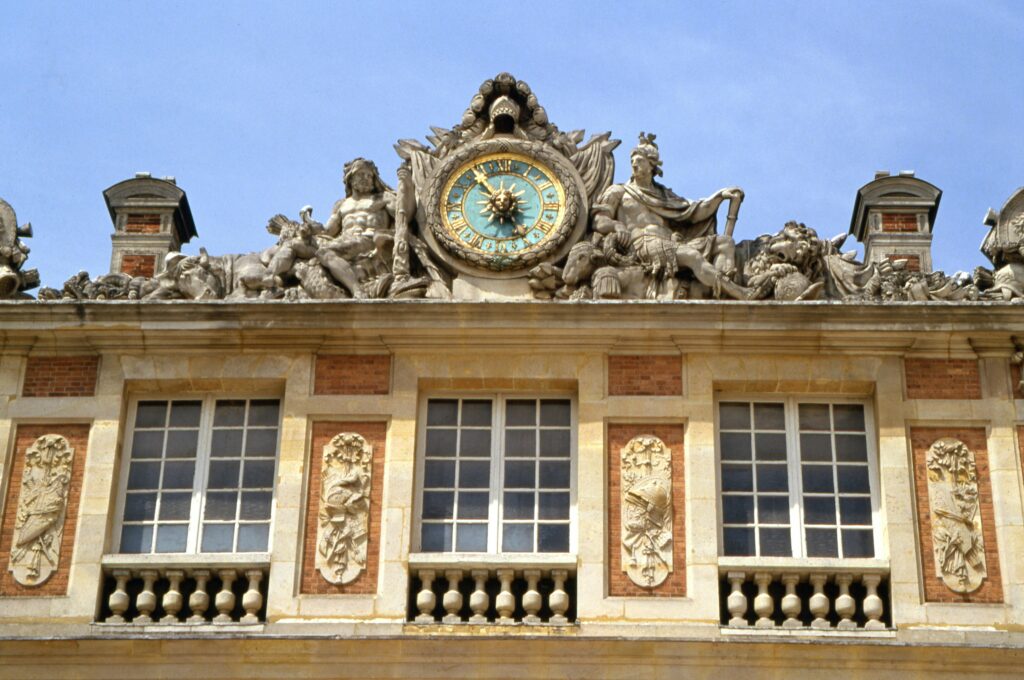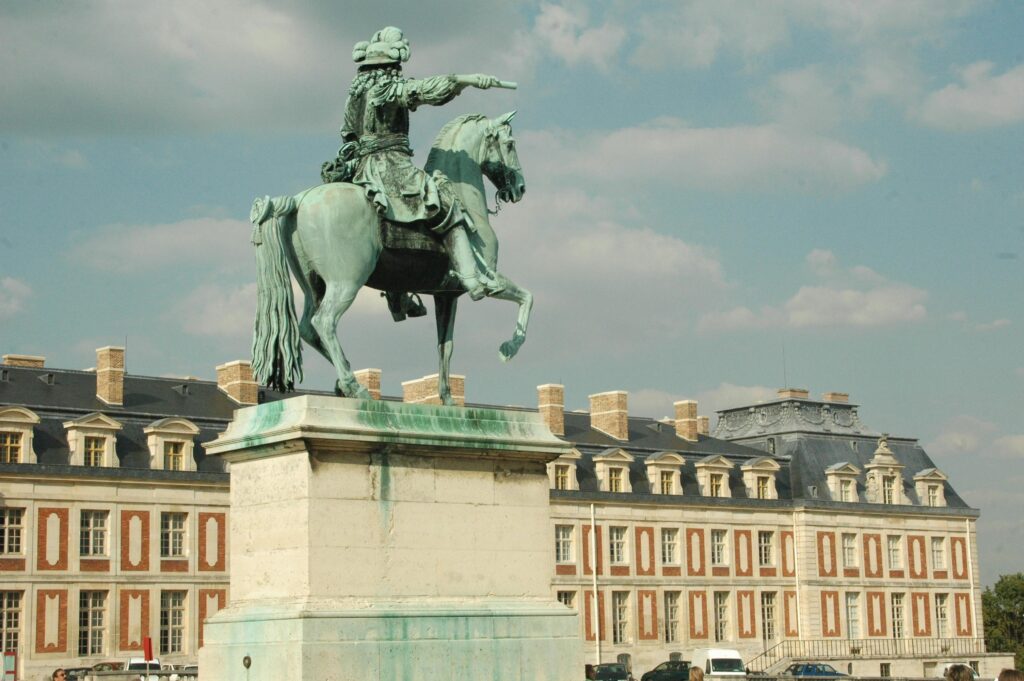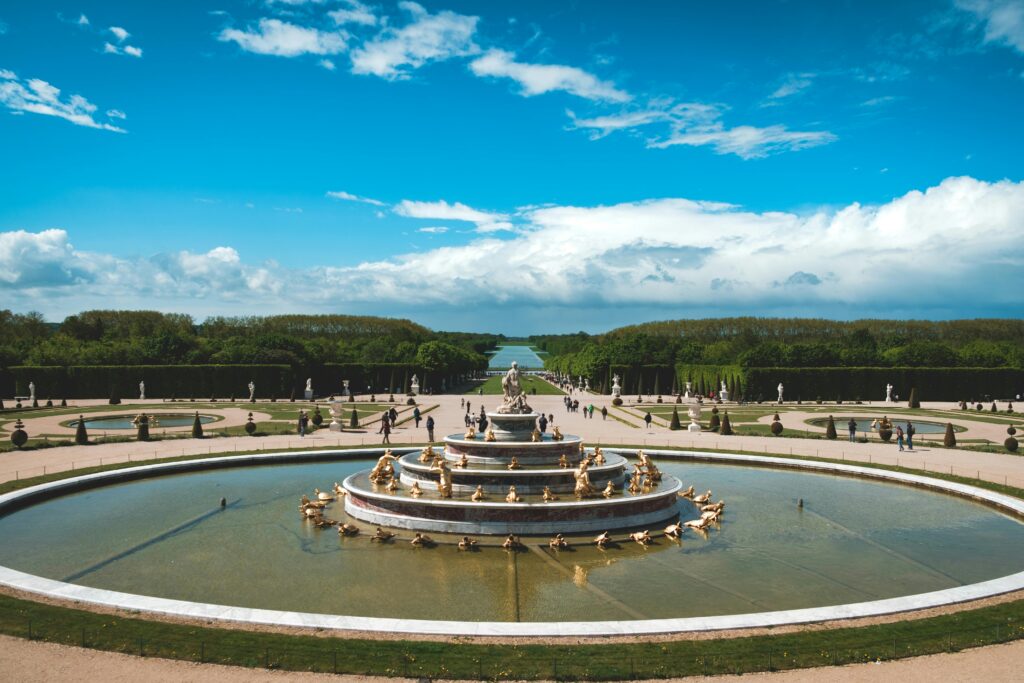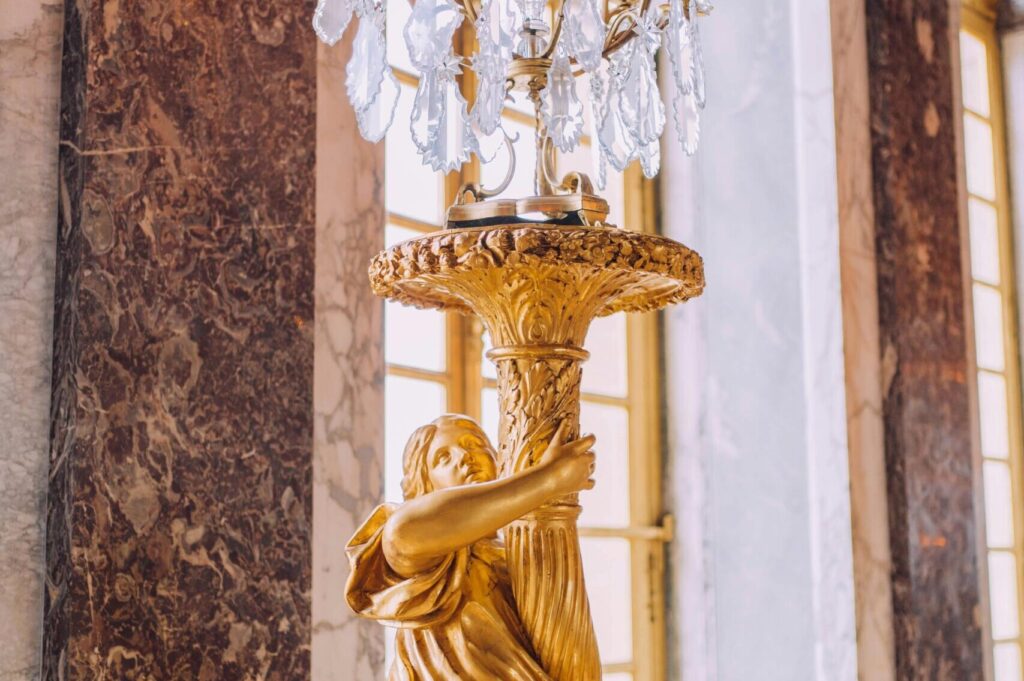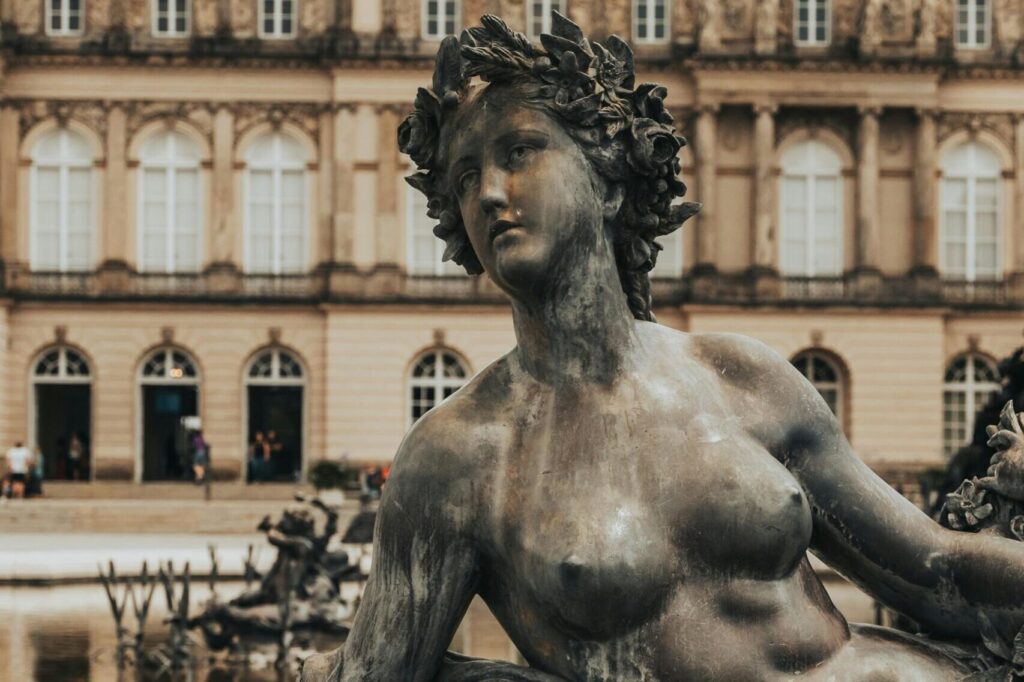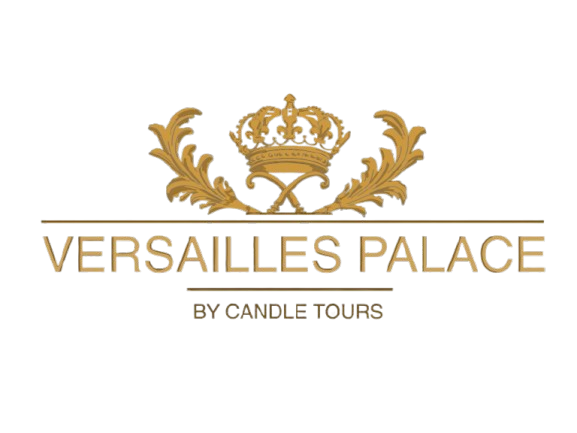CHATEAU VERSALLES TICKETS
Discover the history of France with direct access
- Skip the line
- Duration 3 hours
- Audio guide; ENG, SPA, FRA, DEU, POR, ITA, RUS, JPN, ZHO
- Guided Tour
- Minimum age +18
- The voucher is accepted on the mobile
- Wheelchair accessible
- Discount for children under 18 years old
Welcome to the Chateau Versalles
Symbol of absolute monarchy
International prestige
Discover UNESCO World Heritage Site
+ 8 million annual visitors
Enjoy a unique Royal House in the world
The Palace of Versailles is one of the world’s most famous monuments, recognized as the universal symbol of French classicism and, most significantly, as the architectural representation of the total power and glory of the absolute monarchy.
Originally a modest hunting lodge for Louis XIII, it was his son, Louis XIV, the “Sun King,” who transformed it starting in 1661 into an unprecedented work of art and political instrument. Versailles became the official seat of government for the Kingdom of France in 1682, moving the capital away from Paris and keeping the high nobility under the direct control of the monarch.
The complex is a synthesis of French Baroque art, notable for its lavish palace—home to the iconic Hall of Mirrors and the Grand Apartments—and its majestic Gardens, designed by André Le Nôtre. These gardens, considered the largest ever created in the history of the West, are laid out with a rigorous geometry that symbolizes the total dominion of man (and of the king) over nature. The entire ensemble was designed to project the “Gloire” (Glory) of Louis XIV, ensuring his magnificence would be eternal.
Versailles functioned as the heart of courtly and political life until the French Revolution in 1789, marking a period of unparalleled cultural splendor and absolutism in Europe.
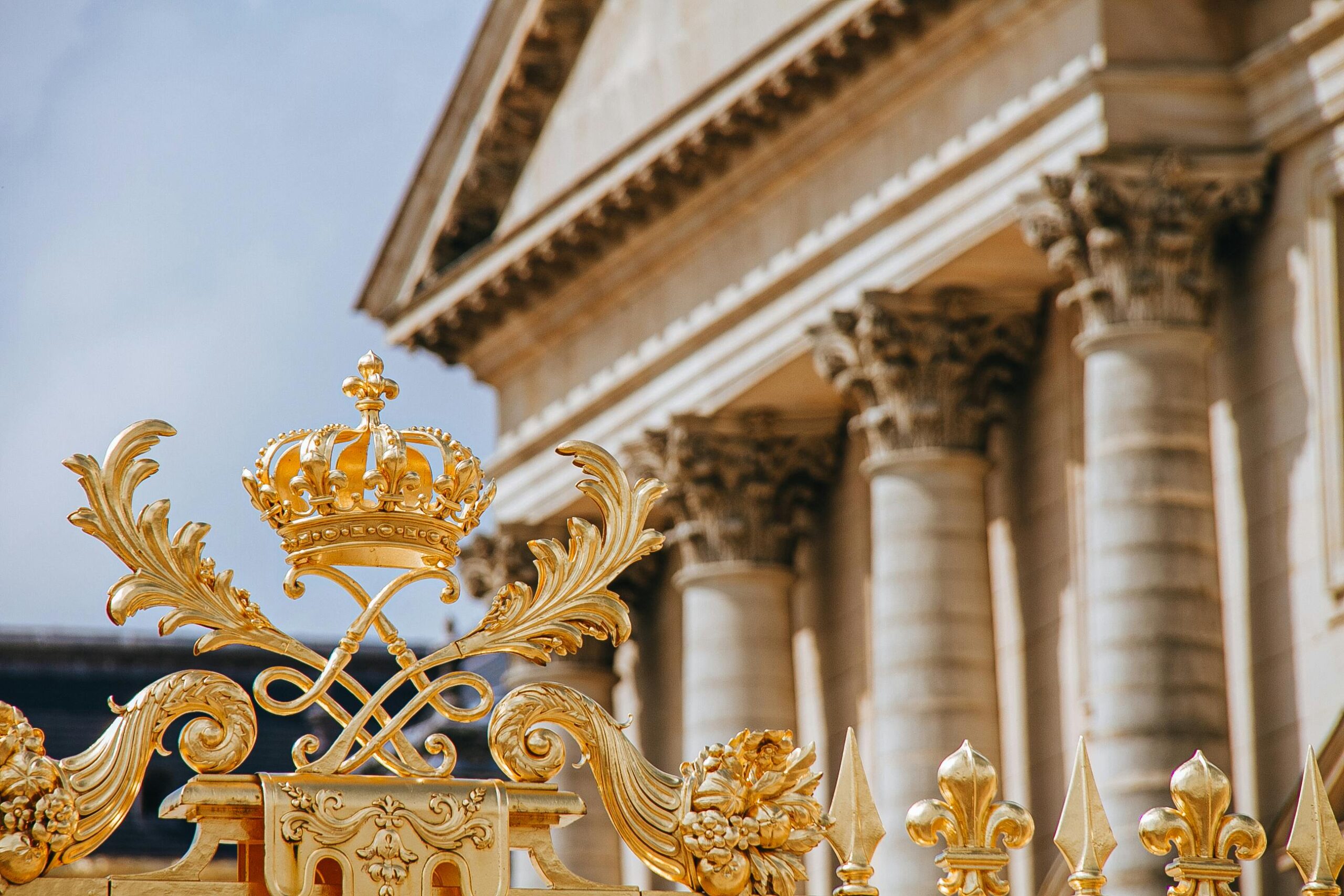
Palace of Versailles
Built in the French classical Baroque style, it combines monumental architecture with lavish gilded decoration on ceilings, moldings, and façades, symbolizing absolutist wealth and power.
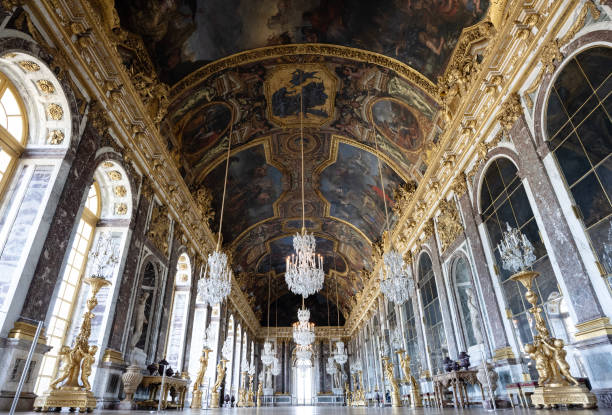
Hall of Mirrors
The most emblematic room of the palace, where diplomatic receptions and festivities were held, reflecting the glory and power of Louis XIV.
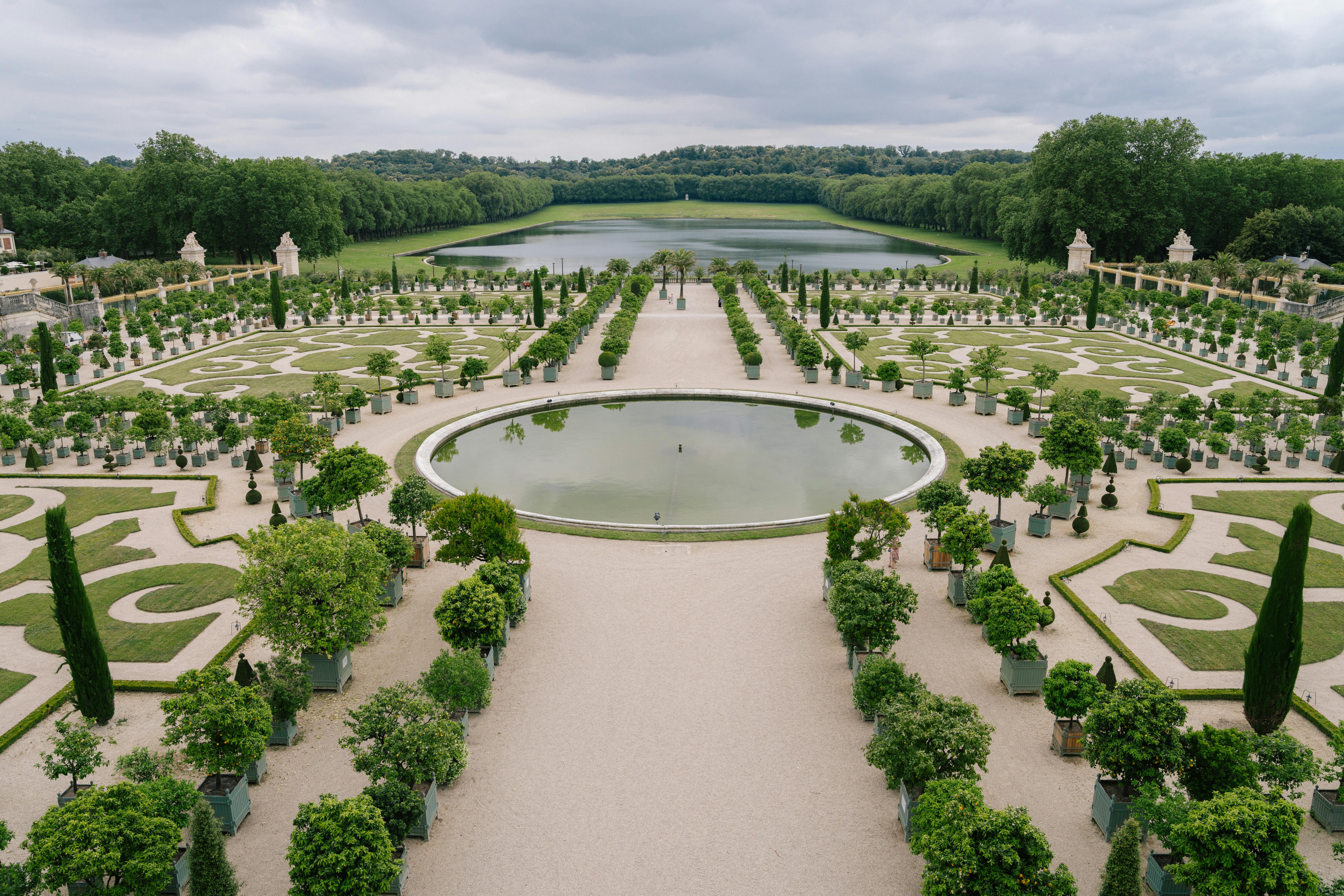
Gardens of Versailles
Designed by André Le Nôtre, they are the greatest example of the French formal garden, organized with perspective axes, fountains, and groves that symbolize the king’s power over nature.

Louis XIV Style Furniture
A collection of sumptuous pieces characterized by symmetry, the use of precious woods, gilded bronze, and Gobelins tapestries, showcasing the luxury and grandeur of the court.
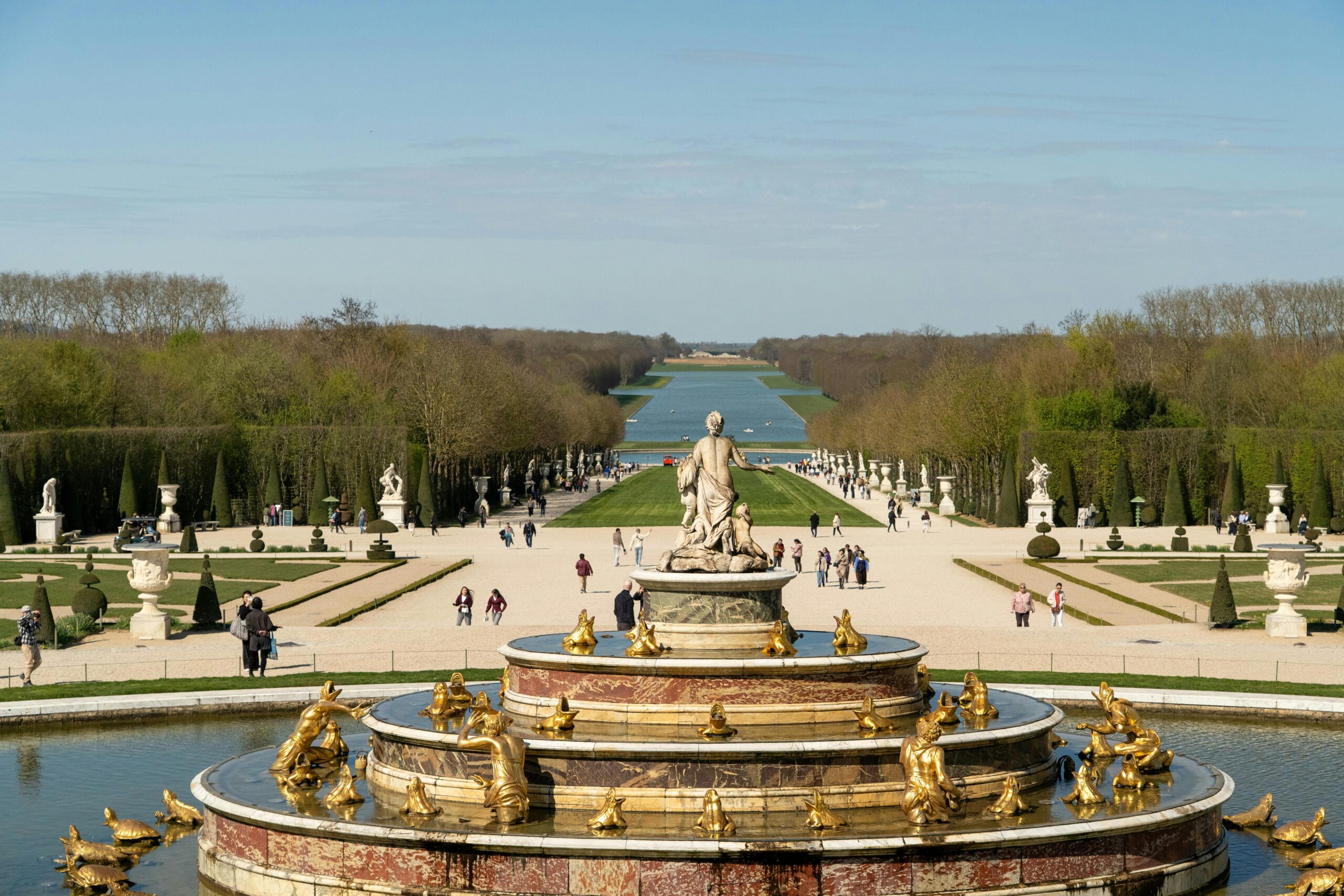
Apollo Fountain and Grand Canal
The central axis of the gardens, symbolizing the Sun King and demonstrating human control over nature.
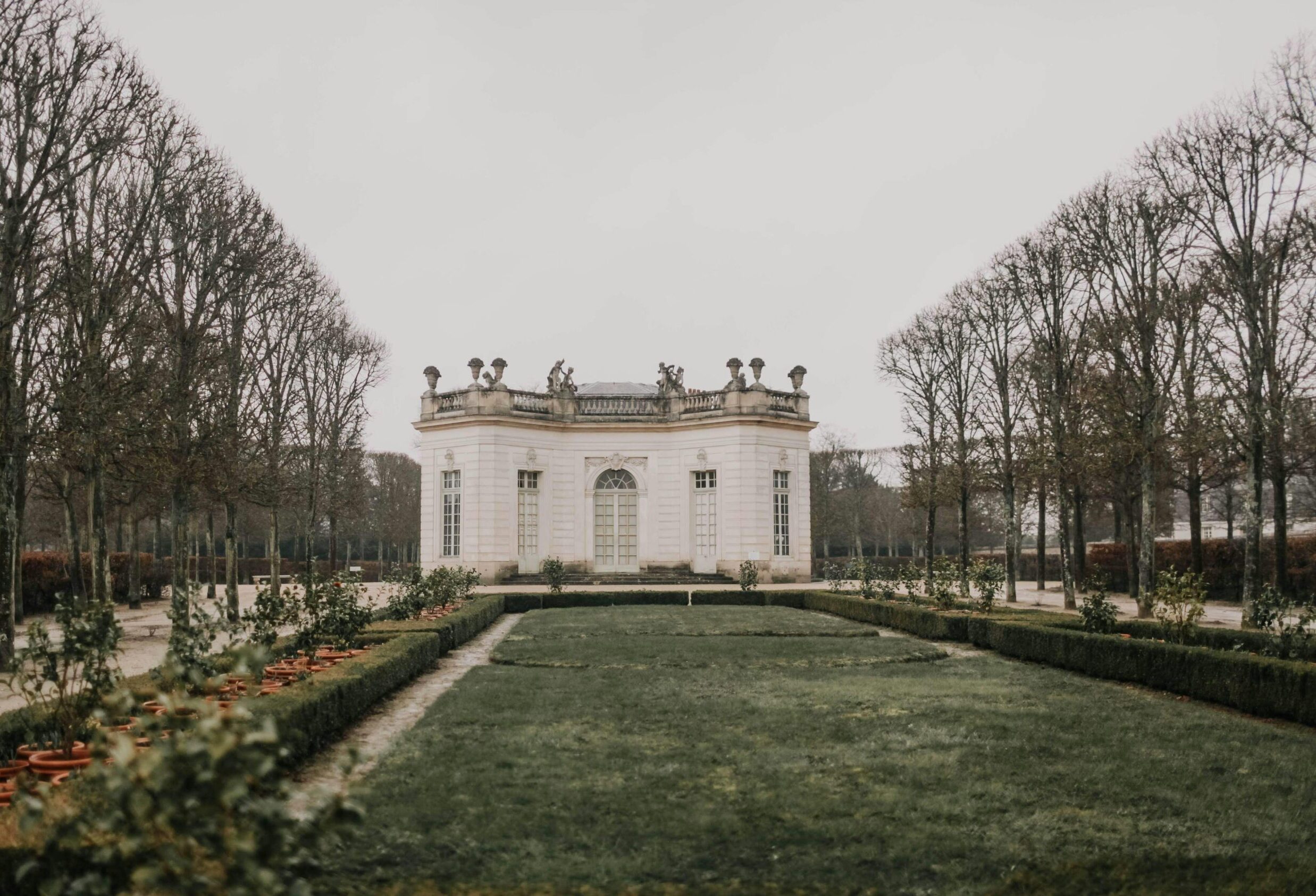
Trianon
A secondary residence within the gardens, associated with the different personal and political stages of Louis XIV.
Weekly Schedule
- Palace and Trianon Estate: Tuesday to Sunday (Closed on Mondays, December 25, and January 1).
- Park and Gardens: Open every day. Free access except on days of the Fountain Shows and Musical Gardens.
- Gallery of Coaches: Saturdays and Sundays.
Opening Hours
- Palace:
- April to October: 9:00 a.m. to 6:30 p.m.
- November to March: 9:00 a.m. to 5:30 p.m.
- Trianon Estate:
- April to October: 12:00 p.m. to 6:30 p.m.
- November to March: 12:00 p.m. to 5:30 p.m.
- Park and Gardens:
- April to October: 7:00 a.m. to 8:30 p.m.
- November to March: 8:00 a.m. to 6:00 p.m.
- Gallery of Coaches: Opens from 12:30 p.m.
Security rules and restrictions:
- Large bags and suitcases are not permitted. Only small bags (55 x 35 x 20 cm) are allowed and must be checked in at the left-luggage office.
- Food and drink are not permitted in the Palace’s public areas.
- Photography is permitted, except in some specific areas where it may be restricted.
- The use of strollers is permitted.
- A single tour route is followed, which includes the Grand Apartments and the Hall of Mirrors.
- Admission is free for children under 18, EU residents under 26, disabled persons and their companion, and all visitors on the first Sunday of each month between November and March.
- It is important to reserve free admission as well.
The Palace of Versailles is far more than a sumptuous residence; it is the ultimate expression of absolute powerconcentrated in the figure of one monarch, Louis XIV, the “Sun King.” Its significance transcends the monumental, as it was conceived as an instrument of domestic policy to ensure total control over the Kingdom of France.
The palace’s expansion, starting in 1661, was a direct response to the young monarch’s need for order and control, having been marked by the internal revolts of The Fronde during his youth. By moving the court and the seat of government from Paris to Versailles in 1682, Louis XIV implemented a strategy of domination: he compelled the high nobility to reside at court to keep them under surveillance and away from their provincial power bases. Court life became a theatrical spectacle where even the monarch’s most mundane acts were public ceremonies. The palace life was also deliberately lavish and expensive, forcing nobles into economic dependence on the king’s favors to cover their expenses. In this way, Versailles became a “gilded cage” where social advancement depended solely on the monarch’s will, ensuring unconditional obedience.
Architecturally, the Palace, with its over 700 rooms and facades radiating from the King’s apartment, projected the image of Louis XIV as the center of the political and social universe. His ultimate goal was not just power, but “Gloire” (eternal glory and reputation) that would secure his magnificence for posterity.
he Hall of Mirrors (Galerie des Glaces), designed by Jules Hardouin Mansart and decorated by Charles Le Brun, is the symbolic heart of the Palace and a bold declaration of economic and artistic power by 17th-century France.
Constructed between 1678 and 1684, the room is 73 meters long. Its most striking feature is its 357 mirrors, arranged in 17 arches opposite the 17 windows overlooking the gardens. In the 17th century, manufacturing mirrors of this size and quality was a technique dominated by Venice. By managing to create this immense gallery using French materials and artisans, Louis XIV not only surpassed every European court but also broke a key commercial monopoly.
The hall served as the stage for grand receptions and court ceremonies. The lighted candles reflected in the mirrors, creating an “endless corridor of light” that dazzled foreign ambassadors. The ceiling is covered by frescoes by Le Brunthat glorify the first 18 years of Louis XIV’s reign, using classical mythology to elevate his political and military victories. Beyond its function as propaganda for the absolute monarchy, the Hall has witnessed crucial moments, including the most significant of the 20th century: the signing of the Treaty of Versailles on June 28, 1919, which officially ended World War I.
The Trianon Estate, a complex of palaces and gardens within the vast park of Versailles, is famous for being the private retreat of the last Queen of France, Marie Antoinette. Weary of the strict etiquette and constant scrutiny of the main palace court, her husband, Louis XVI, gifted her the property in 1774 so she could lead a more informal life.
The estate comprises the Petit Trianon (a small neoclassical palace) and, most uniquely, the Hameau de la Reine (The Queen’s Hamlet). Built between 1783 and 1785, the Hameau was a fantasy rustic village, in Norman style, complete with thatched roofs, a mill, and a working farm. The Queen ordered its exteriors to be rustic and even had the facades painted to imitate old bricks and cracks, seeking a form of countryside authenticity.
This “folly” served not only as a place of recreation for the Queen and her close circle but also operated as a model farmwhose produce supplied the Versailles kitchens. It was also used for the education of her children, introducing them to rural life and nature. However, in the context of the economic crisis preceding the French Revolution, this fantasy of “simple life” fueled Marie Antoinette’s unpopularity, becoming a symbol of the monarchy’s extravagance and disconnection from the suffering of the common people.

